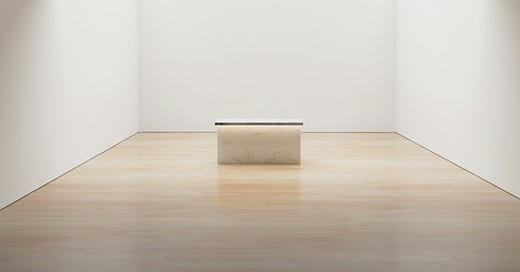If Brands Are Today’s Patrons, Whose Culture Gets Funded?
Read the full piece on PRINT Magazine
We’re used to thinking of brands as advertisers. They buy space, optimize for attention, and measure success in impressions and conversions. But over the last decade, something else has taken root: brands are no longer content to interrupt culture. They want to underwrite it. They’re launching zines, funding exhibitions, commissioning essays, launching book clubs, and curating experiences that bear no obvious sales agenda. They’ve transformed from marketers to patrons.
The idea of the brand as patron may sound novel, but it’s a return to something old. Centuries ago, churches and monarchs sponsored the work of painters, sculptors, architects, and composers, not to sell a product, but to assert power, communicate values, and build legacies. Patronship was never purely benevolent; it was strategic. Today’s branded culture follows a similar logic, just with different incentives. Instead of spiritual or political authority, we’re seeing corporate actors use cultural production to accrue symbolic capital in the form of prestige, credibility, and relevance. Unlike older models of partisanship, these new patrons don’t stay in the background. Their names are on the wall, in the caption, and often embedded directly into the work.
This is a look at how brands became the new patrons of culture: what they’re funding, what they’re extracting, and what kind of world they’re quietly building in the process.
Patronage Then: Power, Legacy, Immortality
The patron model is deeply historical. In Renaissance Italy, families like the Medici funded works by Michelangelo and Botticelli as an assertion of power and prestige. These commissions turned wealth into visibility. By aligning themselves with artists, patrons didn’t just support culture—they authored it. They shaped the dominant narratives, aesthetics, and institutions of their time.
The Medici weren’t alone. The Catholic Church commissioned massive public works to consolidate and express its power, not uplift the masses. The grandeur of a cathedral was not just about worship: it was a spectacle of authority, a demonstration of divine alignment and control. Art, in this model, was never free. It served as proof of patron values, a propaganda tool wrapped in beauty.
But even in this era, patronage was conditional. Artists served the ideological aims of those who paid. The church demanded piety. The state demanded civic glory. The Medici demanded immortality. As a model, patronship has always involved a tension between creative expression and institutional ambition. The artist received funding but also instruction, oversight, and limits.
Fast forward to today, and the benefactors have changed. The cathedral is now the flagship store. The gallery wall carries a logo. But the underlying mechanics, the conversion of capital into cultural authority, remain intact. The key difference is the speed. Where Renaissance commissions played out over decades, brand patronage happens on campaign timelines. The stakes are commercial, not eternal.
This is an excerpt from this piece. The full piece is available on PRINT Magazine’s site here.





Wow that IS a loud thought. I had to re read that a few times
I read your full piece on Print's website, and my GOD. You are so incisive with how you unravel cultural trends. I'm primarily a theatre artist and this is timely given how many regional theaters are actively panicking given recent arts funding being slashed. In order to stay afloat, I'm noticing that season announcements are getting 'safer' (re: White, aggressively heterosexual, as politically inoffensive as possible) as a means of securing more conservative patrons.
This also has me thinking about certain famous artists like Beyoncé, who are utilizing corporate investments (Levi's, Sir Davis, Cécred, etc.) to fund a massive cultural project such as "Cowboy Carter". And she's an extremely unique example, but I'm thinking about your mention of some artists choosing the corporate project with constraints to fund the more risky (I wouldn't call it radical given her absurd accumulation of capital) work. I'm thinking in draft, but your work makes me think big thoughts haha. Thank you!